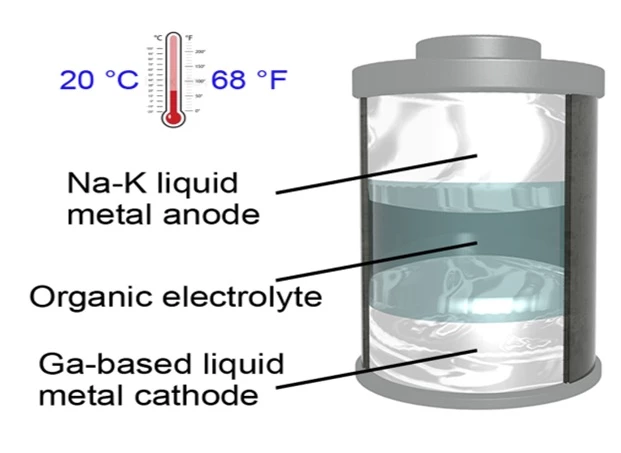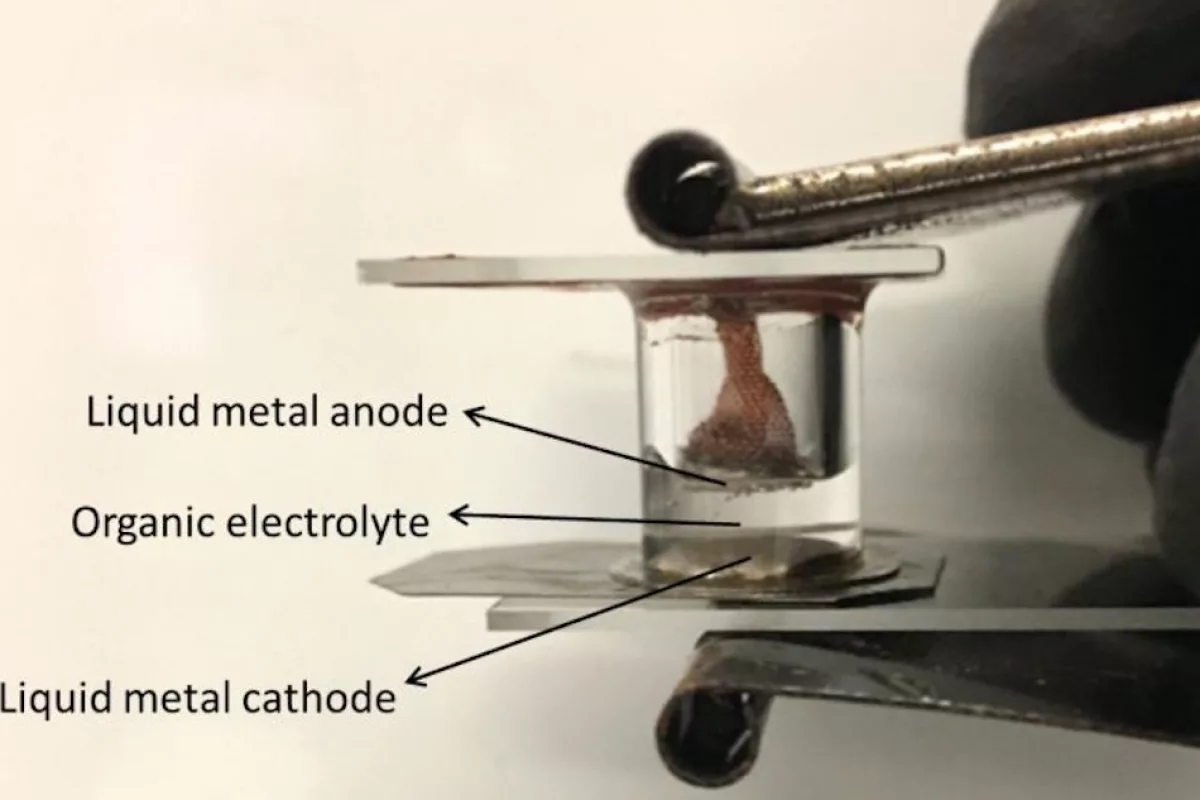Liquid and solid-state batteries each have their own advantages and disadvantages, but now researchers at the University of Texas at Austin claim to have developed a new battery that mixes the best of both worlds. The new design is the first all-liquid-metal battery that can operate at room temperature, and it apparently outperforms lithium-ion batteries.
Liquid metal batteries have electrodes made of – you guessed it – liquid metals. These devices are less susceptible to wearing out than solid batteries, since dendrites don’t form and damage the components. Plus, they’re simple to scale up – just add more liquids in bigger tanks.
But there’s one major downside: temperature. In order to keep the metals liquid, most of these batteries need to be heated to at least 240 °C (464 °F). The equipment needed to do that makes the devices bulky and energy-consuming.
But for the new study, the team investigated alloys that could remain liquid at more useful temperatures. They settled on two that worked well, using a sodium-potassium alloy for the anode, and a gallium-indium alloy for the cathode. These were able to remain liquid at just 20 °C (68 °F), which the team says is the lowest operating temperature for any all-liquid-metal battery.

The two liquid metal electrodes are separated by an organic electrolyte in the center, which is also in a liquid form. The team says that the new battery can be charged and discharged several times faster than lithium-ion batteries, and had high energy and power density.
With the temperature barrier removed, the team says that the new liquid-metal battery could potentially begin to find use in powering electronics of all scales, from small wearables to grid-scale energy storage systems.
“This battery can provide all the benefits of both solid- and liquid-state – including more energy, increased stability and flexibility – without the respective drawbacks, while also saving energy,” says Yu Ding, lead author of the study.
That said, there’s still plenty of room for improvement. Gallium is a bit expensive, so the team plans to investigate other alloys made of more common materials. Some of these other materials could also potentially allow the battery to work at even lower temperatures. A more conductive electrolyte could also help improve the power output.
The research was published in the journal Advanced Materials.
Source: University of Texas at Austin




